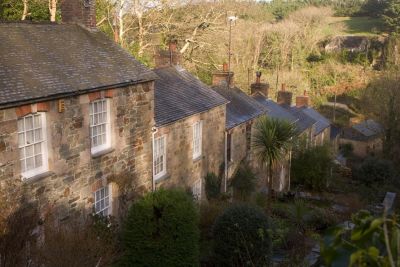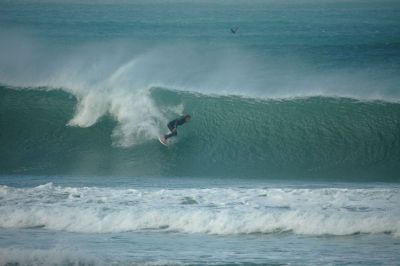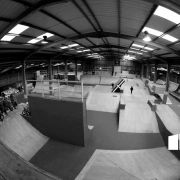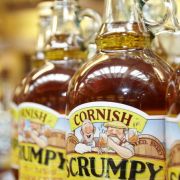
St Agnes was yet another centre of the tin and copper mining industries in Cornwall. Many of the old engine houses can be seen around the area. The town church is worth a visit to see its unusual poor box. St Agnes boasts many cafés, restaurants, craft shops and galleries. Free car parking makes it an even more attractive place for day-trippers. One sight not to be missed is the famous row of Stippy-Stappy sea captains’ cottages. The free museum is on the edge of the town on the Truro road.
These days, the town is an ideal centre for walking holidays and those exploring the north Cornwall coastline. The cliffs and coves and the mixture of wildlife of this area make it particularly attractive to visitors. Turtles, sunfish, porpoises and dolphins are sometimes seen in addition to the more common seals and seabirds. There are many attractive walks along the coastal footpaths and inland.
It is still possible to follow the mining trail beginning at the famous Wheal Coates tin mine on the cliffs near Chapel Porth and continuing along the coastal path to the old workings at Polberro and Wheal Kitty. The trail ends at Blue Hills at Trevellas, the last remaining tin production centre in Cornwall. The mine Wheal Coates goes right down to the sea and at high tide the waves can be heard crashing against the rocks through a grate on the floor of the ruin. The mine shaft is accessible through a large cave at low tide on Chapel Porth Beach. Wheal Coates is said to haunted by the ghosts of the miners who died there.
Nearby St Agnes Head is a great spot for watching the various sea birds and for an occasional glimpse of a grey seal. And a climb up to the 628 feet high St Agnes Beacon will be rewarded with a view from coast to coast. It is said that 23 miles of coast and 32 church towers can be seen from here. The old Cornish name of St. Agnes was Bryanick, meaning pointed hill. It is believed to have been named for this dominant landmark. Bolster’s Dyke is a two mile long earthwork, said to have been built by the giant who lived there. It originally ran from Chapel Porth to Trevaunance Cove.
There is a shingle beach at Trevaunance Cove, just below the town. At low tide, a sandy beach is revealed. Another beach at Chapel Porth has a similar construction. Both beaches have lifeguards in attendance during the season. The 17th century Driftwood Spars Hotel overlooks Trevaunance. This was originally a fish cellar and many of the original timbers came from shipwrecks in the area.
Trevellas Porth is not suitable for bathing but is of interest because of the vestiges of the mining industry. Much of the television series, Poldark, was filmed around this area.
There is quite a thriving surf scene in St Agnes with several surf shops and the standard of surfing is possibly some of the highest in the country. Being the capital of 'The Badlands', the locals have somewhat of a reputation for not being the most tolerant, during the 90's the hardcore locals here were known as 'The Disciples'. The bottom line is show sufficient respect and you won't have any problems. Nearby Porthtowan also has great surfing beach, hosting surfing competitions each summer.
Not far away is Presingoll Barns, a crafts complex surrounded by beautiful countryside. Visitors have the chance to see pottery, candle carving and fudge making and, for a small charge, can try the potters wheel, decorate plates and pots or dip their own candles. Entrance is free and there are facilities for picnics in addition to a restaurant serving light lunches.




















